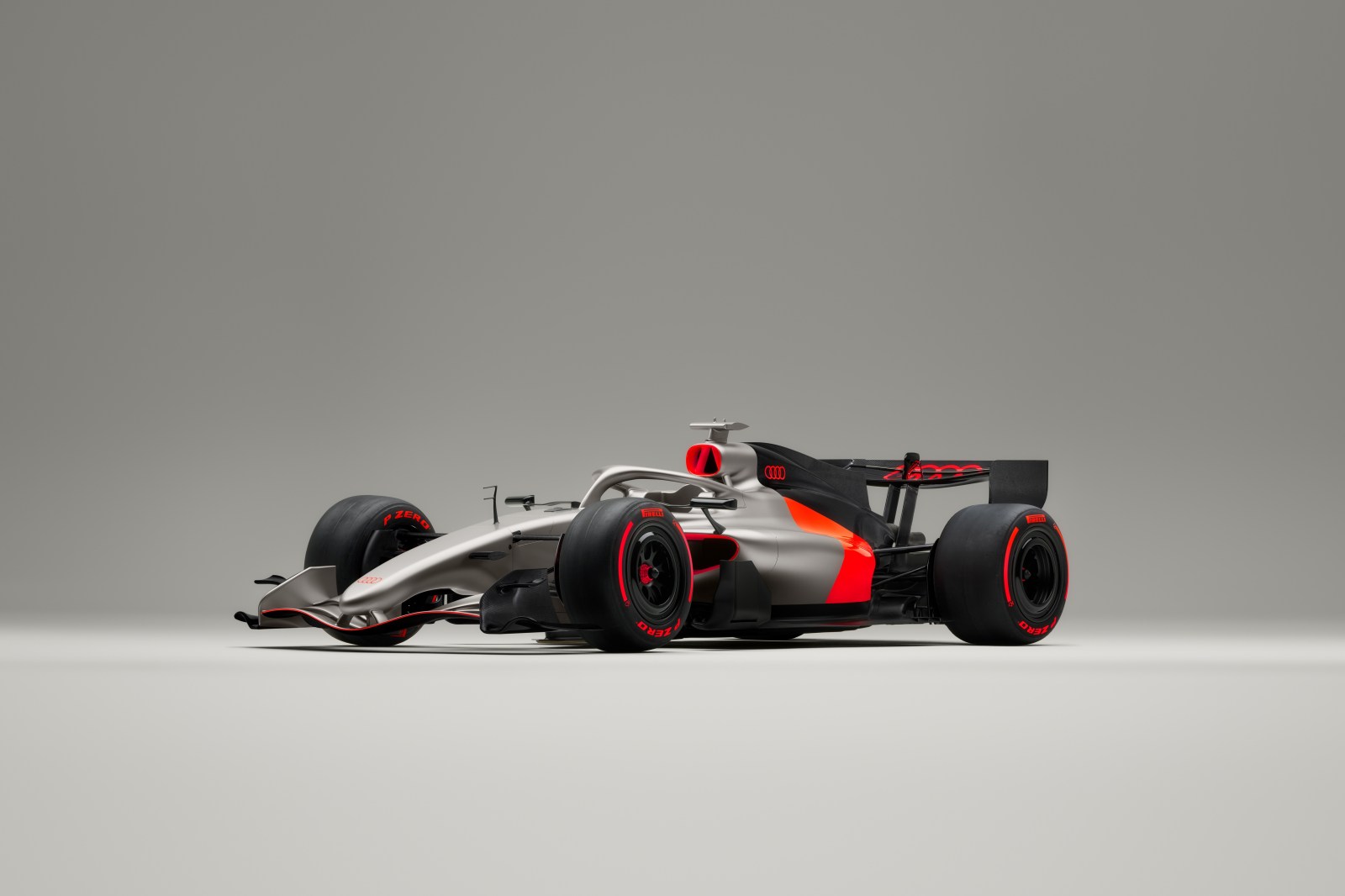By Tim Chan
If you purchase an independently reviewed product or service through a link on our website, Rolling Stone may receive an affiliate commission.
Audi gave fans a first look into its first-ever Formula 1 entry last week with the debut of its Audi R26 Concept car in Munich.
Hundreds of journalists, influencers and past Audi drivers were on hand for the R26 unveiling, which comes less than four months before the team’s first race in Formula 1. The new car reimagines the familiar F1 livery in a sleek and minimalist finish, with a titanium and carbon black colorway accented with a bold new “lava red.” Audi’s iconic rings logo will also be rendered in the newly-introduced red color.
The R26 Concept is one of the first expressions of the brand’s new visual identity, and while it’s similar in size and scope to the actual car on the track, the final exterior is expected to include logos from title partner Revolut, sponsor BP, and apparel partner Adidas, among others. Worth noting: Audi also enters the F1 in 2026 with its own drivetrain (“power unit”) developed in Germany, in addition to the chassis.
While Audi has long been a driving force in the World Rally Championship and 24 Hours of Le Mans, among other racing circuits, 2026 will mark the automaker’s official foray into the F1 grid, after first being announced as a new team in 2022. Among the VIP guests on hand for the unveiling event were current Kick Sauber drivers Nico Hulkenberg and Gabriel Bortoleto, who will both be driving for Audi F1 when the team switches over in January. The drivers were joined by the three leaders at the helm of the Audi F1 project: team lead Mattia Binotto, team principal Jonathan Wheatley, and Audi CEO Gernot Döllner, who all say the team — and car — is primed to be a legitimate contender on the grid.
“This is a three-phase plan,” an optimistic Döllner told reporters at the Munich event. “The next two years we will be challengers and those are our challenger years, and then from 2028 on, we can be real competitors. And from 2030 on,” he declared, “Audi will challenge for the championship.”
While there are 24 races around the world in 2026, Audi’s F1 team will be headquartered in three locations in Europe, with the power unit and gearbox being developed in Neuburg an der Donau in Bavaria; the race cars worked on in Hinwil, Switzerland; and a technology office set up in Bicester, UK. While much of the current Kick Sauber team will move over to Audi in the new year, Wheatley says there is already a palpable excitement in the air for the new team.
“This [transition] has been much more open-minded than I expected,” he says. “Audi’s investment in the team and the belief in the team has been incredible, and the team is starting to believe in itself now, in terms of building momentum and moving forward.”
Wheatley references Bortoleto’s recent crash at the young Brazilian driver’s home race at the Sao Paulo Grand Prix, as proof that all is gelling behind the scenes. Though the rookie F1 driver barreled into the wall during the sprint, the team was able to rebuild his car for the next day’s race. “Rebuilding Gaby’s car was not from tools and what not, but it came from spirit,” Wheatley says. “That’s very much the underpinning of the success of this project.”
The first official test drives with the new Audi Formula 1 cars will take place behind closed doors at the end of January, before the livery is unveiled to the public during testing in February in Bahrain. The Audi F1 team makes its debut at the first race of the season, in Melbourne in March. That’s also when the new F1 regulations go into place, with an emphasis on lighter cars, sustainable hybrid power units, and narrower tires, among other rules. Binotto says the team is equipped and well-briefed on the changes, and will be ready when the five lights go out.
“This is the biggest change in the last decade but overall we think it’ll be great for racing,” Binotto says, adding that “having full control over the power unit and chassis gives you a competitive advantage.” As for Audi’s outlook in F1: “We accept complexities because we are passionate about winning,” Binotto says.
“That’s how you survive in Formula 1,” Wheatley adds. “You have a challenge and you deal with it. You keep pushing relentlessly forward.”
We want to hear it. Send us a tip using our anonymous form.
Rolling Stone is a part of Penske Media Corporation. © 2025 Rolling Stone, LLC. All rights reserved.













